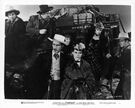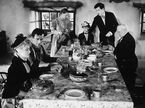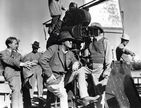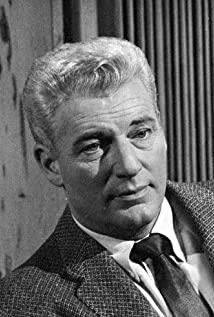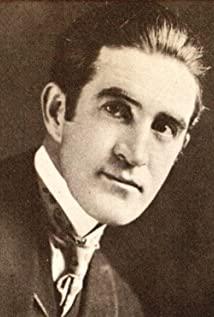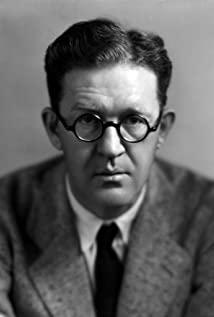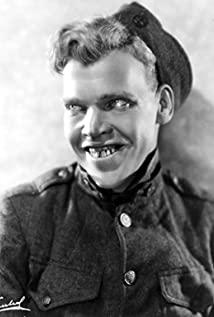The economic, political and cultural changes of the society have caused changes in people's thinking, moral concepts and values in this era; and the changes in thinking, moral concepts and values have caused changes in the aesthetic requirements of contemporary movie audiences; The change in requirements directly determines the character settings in the movie. As a result, in the Westworld on the screen, various protagonists have appeared.
In the development of western films, the characters of the protagonists can be roughly divided into: the lone cowboy hero, the masculine and heroic sheriff, the bounty hunter and other roles in the development direction. Over time, each of the four types of characters became mainstream on the screen in turn. However, in the following analysis, the exemplified films are not strictly divided by time and age, and the same type of protagonist often appears in different ages. Therefore, the exemplified films are mainly classified by roles;
In 1939, John Ford's "Flying Off the Mountains" marked the maturity of the Western. The image of Lin Guo, the protagonist of the film, is also known as a model for the protagonist of earlier Western films. Rough, masculine, and righteous tough guys are the hallmarks of such protagonists. In this classification, the protagonist's personality is idealized, and the moral standards are "superhuman". The protagonists often don't care about their own interests, and the reason for their actions is only out of inner justice, fighting for the weak. For example, Meng Ge, the protagonist of the later film "Red Dead Redemption", and the harmonica player in "Once Upon a Time in the West" (new version). They all conform to this pattern: the lone ranger occasionally passes by a small town, and there are villains in the town that make the town uneasy, the lone ranger solves the villain, and then leaves the town alone.
In the 1940s and 1950s, with the influence of the Cold War ideology and the impact of the progress of urbanization and industrialization on people's hearts, "psychological westerns" appeared in this period. It mostly reflects the contradiction between the helplessness of heroes to deal with social problems and the irrational expectations of the public. The protagonists of such films are mostly the sheriff of a small town in the west. Like the protagonists of the early Westerns, the sheriffs remain masculine and righteous, but add to their inner contradictions. At this time, in this type of character design, the moral standard of the protagonist has gradually separated from the original high tendency of "deification". On the one hand, the justice of the protagonist comes from the heart, but on the other hand, it comes from his own responsibilities. For example, in "Noon", the sheriff who could have escaped on his own, returned to the town and fought to the death with the cowboy who came to the town for revenge.
By the 1960s and 1970s, with the rapid development of capitalism, the ideology of capitalism was firmly rooted in the hearts of the people. The "professional western" appeared. At this time, the cowboy protagonist went to solve the villain, not out of his own spontaneous justice, but to chase the villain to get the bounty. At this time, the moral standard of the protagonist is further "humanized", which is in line with the values of capitalist society. For example, compared with "Red Dead Redemption" in "Red Dead Redemption", the reason for seeking justice has changed completely, and the reason for fighting the villain has become the number of bounties on the wanted list. In the last part of the trilogy, "The Good, the Bad and the Ugly", the protagonist's moral standard has dropped again compared to the previous one, and the protagonist has become a bounty hunter and fraudster. The character setting gives the impression that the ugly is ugly enough, the bad is bad enough, but the good is not so good. At best, it can be counted as a thief.
Since then, Westerns have continued to develop in different directions. Some still inherit the bounty hunter mode, such as the protagonist in "Killing Without Amnesty". But the difference is that the hero is not as heroic as before, and even the hero sometimes looks sloppy and useless.
There are also protagonists with new roles. The protagonist is no longer a decent character, but a villain, a robber. For example, "Female Robber", not only the protagonist is positioned as a robber, but also a rare female character among the protagonists of Western films.
Whether the protagonist in a Western is a hero, a sheriff or a robber, the protagonist will eventually do justice, and even a robber can steal. But the film "Death of the Sharpshooter" broke this rule. The film tells the saga of a villain, but it does not rule out empathy for the audience. This is another major shock to the moral standards of the protagonists in Westerns.
Westerns also merge with other genres. For example, "The Stranger", which adds elements such as adventure, psychology, and even horror. The protagonist of the story, William, is also from outside the West. From the protagonist of the film to other factors in the film are different from the previous westerns.
The social, economic and cultural trends determine the setting of the protagonists of Western films on the screen. From the above changes in the different positions of the protagonists of Western films, we can also see that the moral standards of the protagonists of Western films seem to be gradually decreasing. But I think it cannot be said that the moral standards of the times are becoming increasingly corrupt. The more rational reason should be the expansion of the audience's tolerance and the change in the direction of acceptance. This requires that the moral standards of the protagonists of western films gradually change from "deified" to "humanized", from the perfect hero in their hearts to the actual person with flesh and blood.
All rights reserved, please contact the author to reprint the application
View more about Stagecoach reviews



